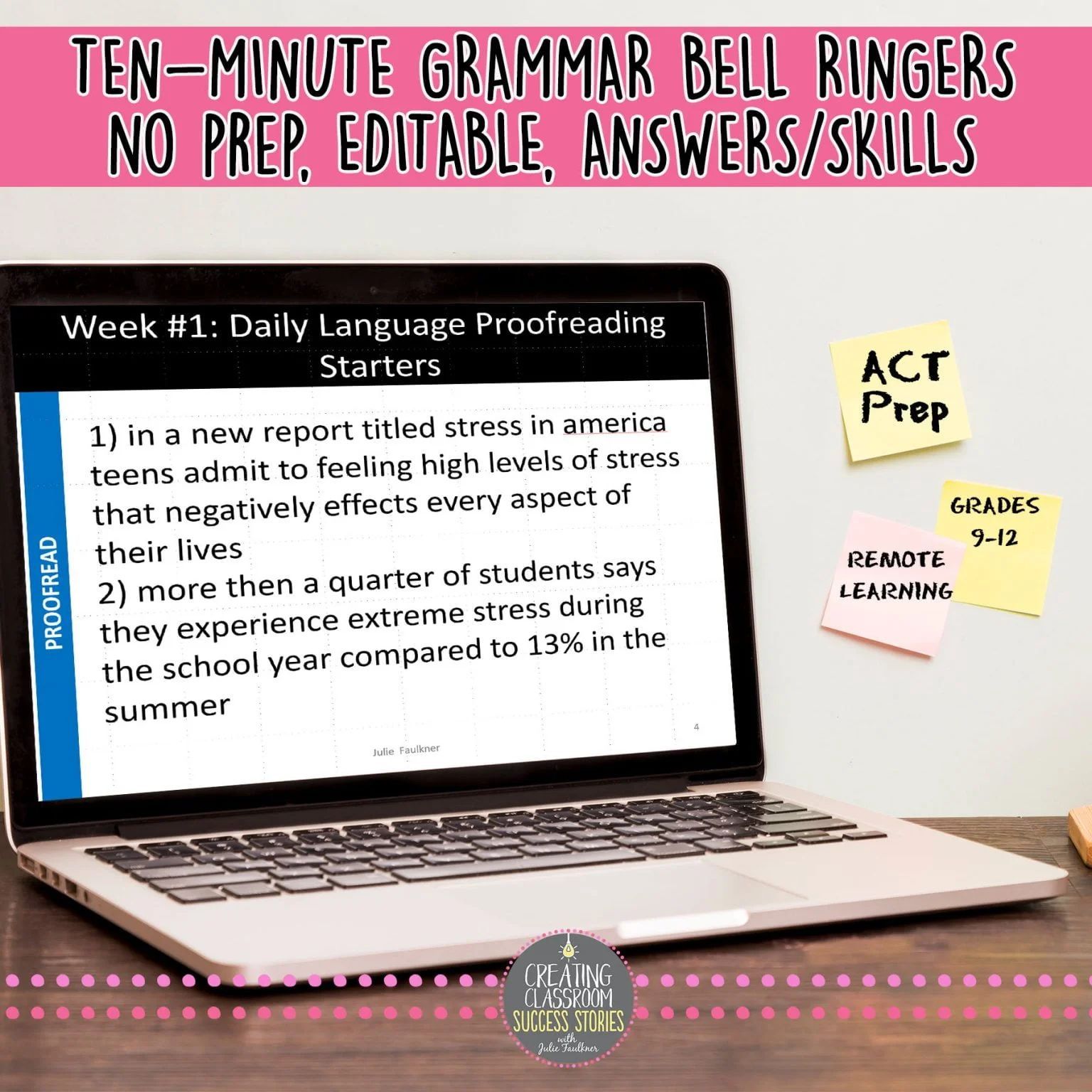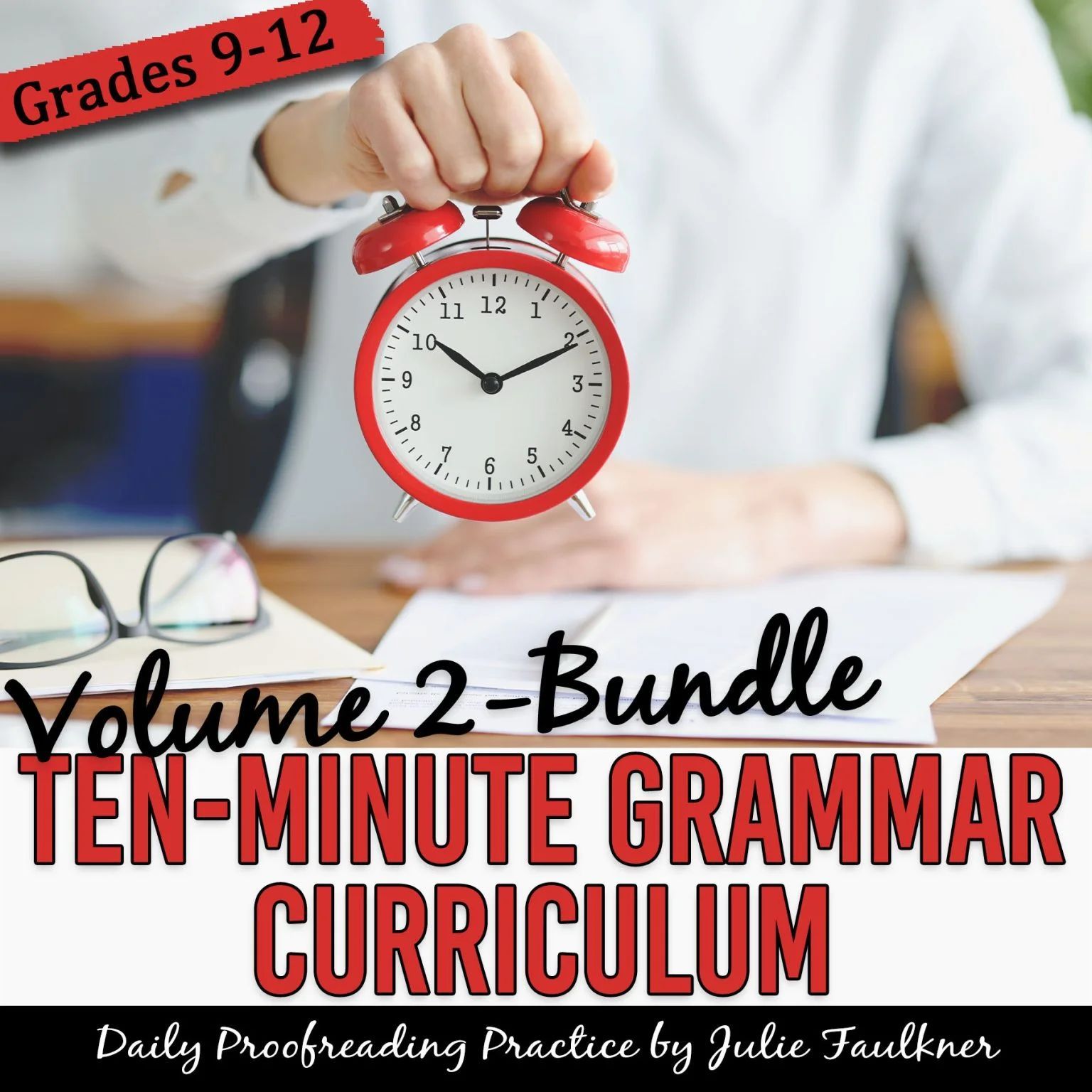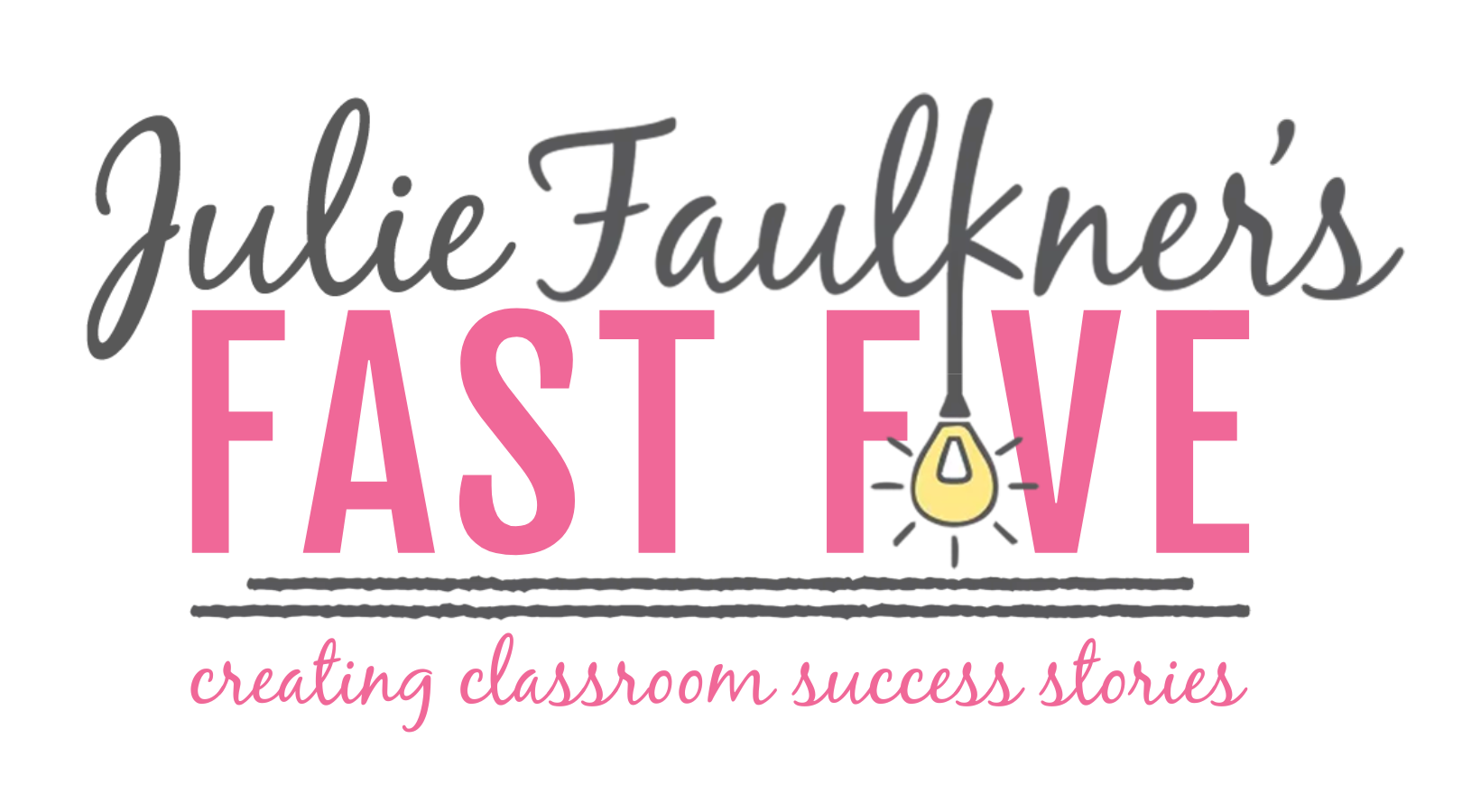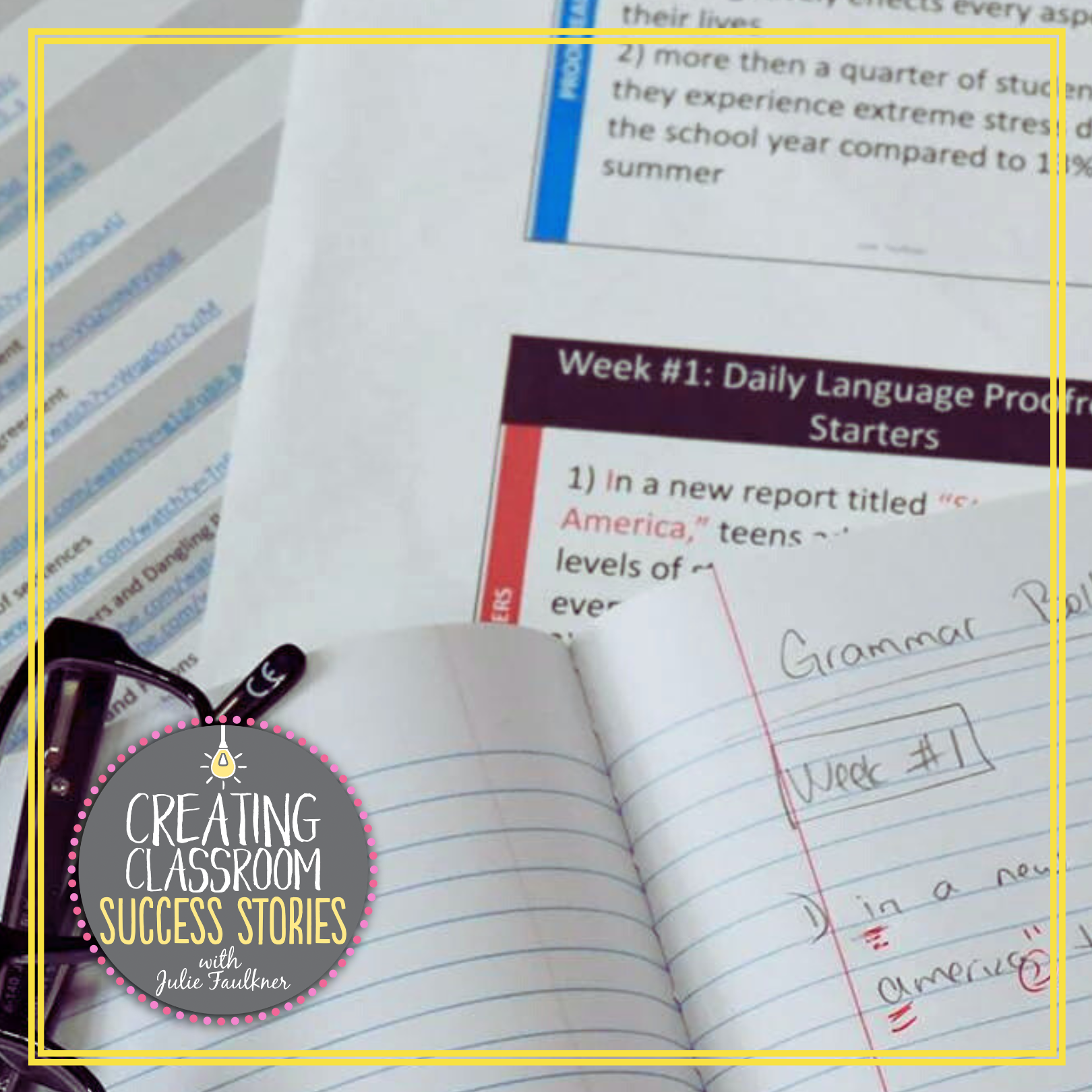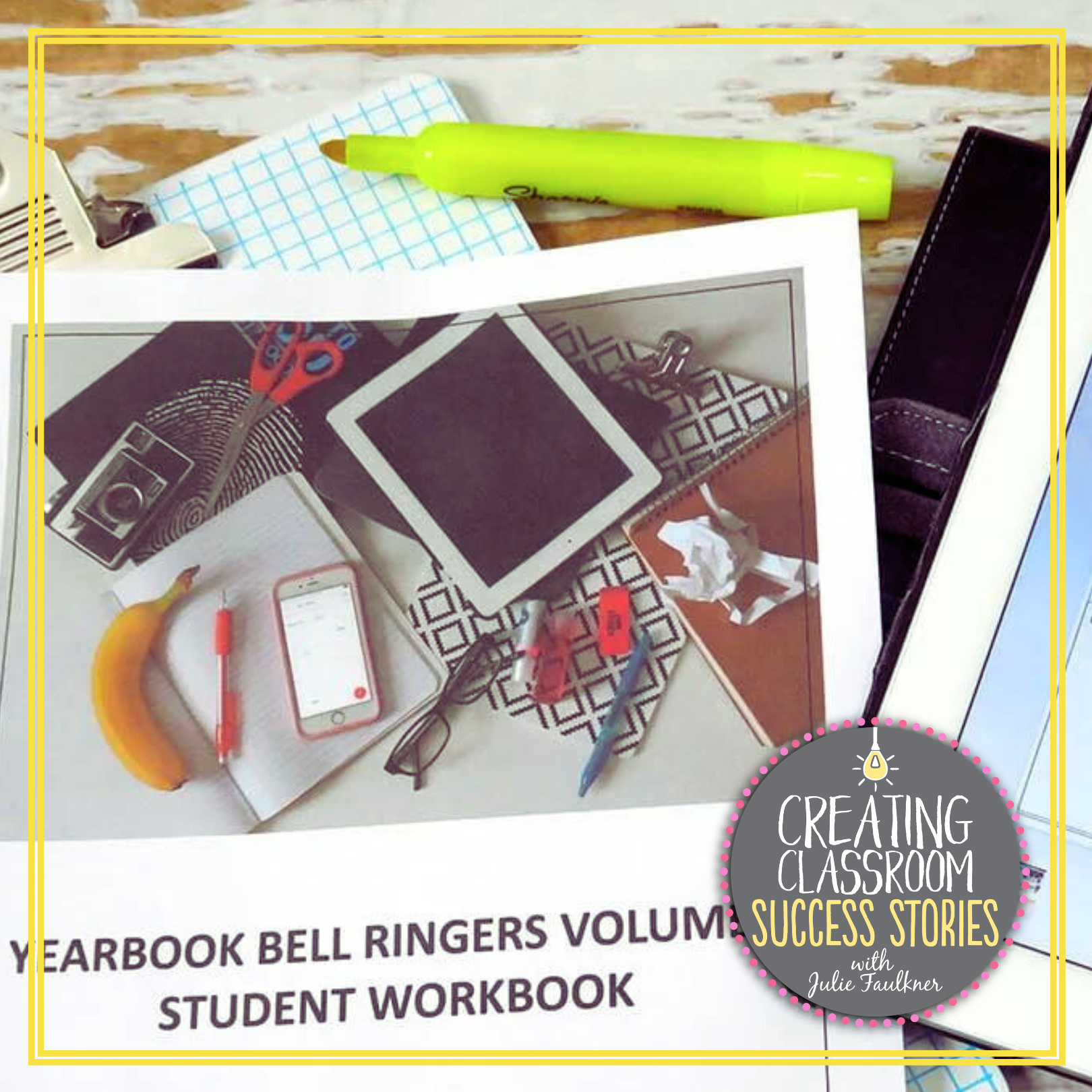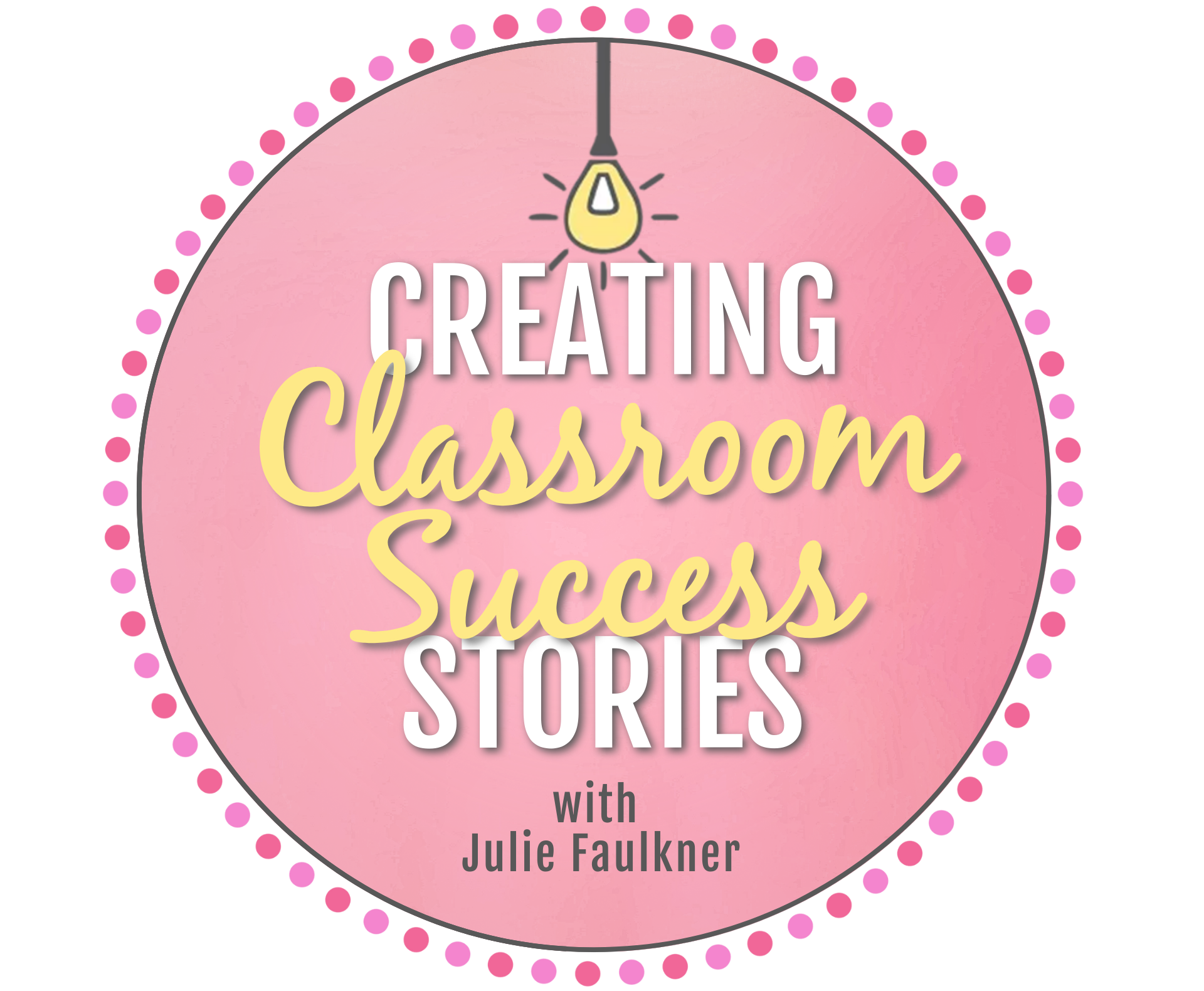Tips Teaching Grammar
in Just 10 Minutes a Day
Teaching grammar and getting it all in no matter what schedule you have is a challenge because time is limited… and grammar is difficult to teach. Nonetheless, there are standards we middle and high school English teachers must cover before the end-of-course exams or standardized tests roll around. Plus, if you are a writing teacher like me, you really just want to see your students’ grammar, usage, and mechanics improve. Grammar is one standard that must be taught, but it’s a huge umbrella encompassing so many skills that it becomes overwhelming to plan for. However, after years of just trying to figure out what works, I developed my Ten-Minute Grammar Program. Now you can benefit from my trial and error! Thus, here are five tips for teaching grammar using my classroom-tested Ten-Minute Grammar Program. It really does cover all that grammar — in just 10 minutes a day.
1. DAILY GRAMMAR PROOFREADING STARTERS
On Monday, Tuesday, and Thursday, my daily starter is two sentences with various mistakes. I have those on the board when students come in, and they know to get started making corrections. I give them time to write the sentence as is, and then they go back and make corrections with a red (or colored pen). — Why do I have them write the sentences as-is? As we make corrections to the sentences, I explain the rules and use the proofreader’s marks to make corrections. I want students to be able to see the original mistake, how to fix it, and what the rule is. — Then, we go over the answers together, and I use that time to provide any additional instruction, explanation, or rules. It takes about 10 minutes each day. Students keep up with their corrections and notes in their folders from day to day. The sentences that I’ve written in my complete grammar curriculum are based on research from current events or provide information about authors, so there’s always something interesting to read about!
See a video of me doing these bell ringers “live” right from my classroom!
See an example video of the tutorial explanations that I’ve done for every bell ringer. They come with the resource! They are perfect for teacher prep or to share with your students.
2. FLIPPED CLASSROOM GRAMMAR VIDEOS
I recently discovered the value of the “flipped classroom.” I was aware of the idea but had never tried it. I hadn’t tried it because I just couldn’t really find an effective way to make use of it – until this year. My students struggle with grammar concepts, as most students do. They actually asked me for more lectures on grammar because they were concerned about the ACT. But, I just couldn’t devote large chunks of class time to PPT presentations of grammar. Even though they said they wanted more instruction and practice, I don’t really think they wanted that either. My solution was to try the flipped classroom concept. Each week on Tuesday afternoon, I send out a link to a grammar tutorial via my Google Classroom. You could also just send an email or use the Remind app. It is a short video on one skill. I encourage students to watch it as many times as needed and to take notes. We will typically work on the same skill or skill set for a few weeks but with a different video each time. So, where do I get the videos? I certainly don’t make them myself ;)! I once had a college professor say, “Work smarter – not harder!” All the videos I send come from youtube.com. Some of my favorite go-to channels are GrammarBytes, Shmoop, The Sentence Center, MrsBartonFWA, and MisterSato411. These weekly videos work pretty well for my juniors and seniors partly because most grammar has been covered by the time they get to me, so a quick refresher typically will suffice. Even with younger students, though, I could see the value in sending home the video link the day before a lecture to set it up. The more times they hear and see the information the better. My complete grammar curriculum includes links to the videos that I’ve carefully curated and collected over the years.
3. GRAMMAR WORKSHEET WEDNESDAY
Students need regular practice with specific, isolated skills. I like the idea of a skill drill to give students specific practice. These worksheets are unlike the daily bell ringers, which have a random selection of mistakes. Each Wednesday when students come in the room, they have a grammar worksheet to pick up and do as a grammar drill for the day’s starter. It’s timed (10 minutes), but they can use their notes that we’ve taken in class or from last night’s video. The worksheet usually has some notes at the top and examples for that skill. This way students can give their attention to that skill and work through examples of all the rules associated with that skill. The skills that I’ve included in my grammar curriculum were selected primarily from the skills covered on the ACT.
4. WEEKLY GRAMMAR QUIZZES
Weekly quizzes go hand-in-hand with the daily proofreading starters. Yes, students may see a question from the skills worksheet, but mostly the questions from the skills we covered in the bell ringers. That is because it’s during the bell ringers that I’m giving the most instruction and rules. Plus, just like on the ACT – the skills are all mixed in, so I want these quizzes to simulate that experience. When I first started doing the daily proofreading, I was collecting notes and notebooks and giving credit for that. It was cumbersome and so time-consuming, and I realized I wasn’t actually assessing if students knew those grammar skills we had worked on all week. I was just measuring if students could take notes and keep up with them! At that point, I started making multiple-choice weekly grammar quizzes. The task was huge, but after several years I had a nice compilation. Since they are multiple-choice, my students can take them on the ActivExpressions or Scantron, and that makes easy grade recording for me. We take the short 5 to 6 question quizzes on Friday and go over the answers immediately. I spend time discussing why one answer is correct over the others, and then students take time to chart their scores and make notes on strengths and weaknesses. It’s a 10-minute time commitment, and students often report increased scores on ACT after having worked through the daily starters and weekly quizzes. Click here to read another post about how I track data. In my 10 Minute Grammar program, the quizzes are also now available in self-checking Google format.
5. OLD-FASHIONED GRAMMAR HOMEWORK
One way to get more grammar practice is to assign homework, but it needs to be homework that requires application. Grammar homework (worksheets) typically has right or wrong concrete answers, thus making it very easy for students to cheat. Instead of assigning worksheets, have students write 10 sentences or a paragraph demonstrating their understanding of sentence structure, subject-verb agreement, parts of speech, etc. This way you can be certain their work is original as it will be easy to spot “shared work.” The worksheets in my 10 Minute Grammar Bundle are great practice for extra work, reteaching, etc. I also have two new sets of digital self-checking worksheets for focused practice. I’ve also found these digital worksheets work well to send home on Thursday nights before Friday’s quiz.
I know there are camps of teachers who suggest that teaching grammar “in isolation” doesn’t work, but I am here to say that it really can. When done well, teaching students the grammar rules, having them practice the rules correctly each day, and holding them accountable with assessments and their daily assignments is the ticket. In that case, to me, it really isn’t teaching grammar in isolation. It’s teaching students fundamentals, explaining the whys and hows, and modeling when and where to use what they’ve learned. You wouldn’t teach an auto mechanic how to work on a car’s engine without first teaching him or her what each tool does and the correct process of dissembling and reassembling. The same is true for teaching students grammar. I can’t tell you how many times I’ve seen students’ test scores go up by 3,4,5,6,7,8 points. As a writing teacher as well, after students have worked through this grammar program with me, students CAN apply the fundamentals to their own writing because they understand the why rather than having to just rely on what they’ve memorized or managed to figure out from the guesswork of “exploration-type” teaching. I wouldn’t be sharing this if I didn’t KNOW that this method worked – from my own experience, from students who have seen better scores on tests and writing, and from parents who see how much their students have learned and can do.
WANT TO TRY THE FIRST WEEK BEFORE YOU DIVE IN? SIGN UP TO RECEIVE EMAILS FROM JULIE’S CLASSROOM STORIES, AND I’LL SEND THEM OVER TO YOU IN A SNAP!
CLICK HERE TO SUBSCRIBE.
If you are ready to try a 10-minute grammar program, take a look at my complete grammar program with daily grammar proofreading sentences, the video links I use, rules, worksheets, weekly quizzes, and explanations and answers. It’s a one-stop shop for grammar instruction.
Love this content?
Sign up for my email newsletter with more tips, ideas, success stories, and freebies!









